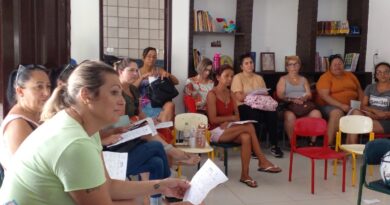Carnaval de Laguna está em reportagem do jornal americano New York Times
Uma cidade pitoresca que comporta o melhor carnaval do sul do país, misturando o tradicional carnaval de rua, com bandas e trios elétricos e as alegorias das escolas de samba. Diz o relato do repórter Seth Kugel, divulgada em reportagem especial sobre o carnaval no Brasil, na edição de domingo, dia 27, do jornal americano The New York Times.
Na matéria, são evidenciadas a importância do carnaval de Laguna em escala nacional. O bloco da Pracinha tem destaque na reportagem.
Fizemos o contato com jornalistas que se interessaram por Laguna na Feira Internacional de Turismo que participamos em Buenos Aires, explica a Secretária de Turismo, Fernanda Bonatto.
Veja a reportagem:
Laguna
About 75 miles south of the state capital of Florianópolis, this town of 50,000 sits on the tip of a peninsula with the Santo Antônio Lagoon on one side and the Atlantic on the other. It plays host to one of the top carnivals in southern Brazil.
The locals like to think they have the best of all worlds here: whereas Rios carnival is best known for its pay-to-enter parades in the Oscar Niemeyer-designed Sambódromo, and Salvador has a traditional street carnival, Laguna places equal importance on both (albeit on a much smaller scale). The towns samba schools compete in the 8,000-person Sambódromo (where entrance is 10 reais, or $5.70 at about 1.75 reais to the dollar), but the streets also fill with blocos, the dancing masses that follow trucks outfitted with sound systems and platform stages where bands play samba and other Brazilian music. (To join in, you typically must purchase the blocos uniform, or abadá.) One prime attraction is the Bloco da Pracinha, which sets out on Sunday from the neighborhood of Magalhães and makes its way to the beach, with tens of thousands of followers in tow.
There is also a third, more family-friendly venue: a stage set up at the citys main beach supports bands playing sambas and other traditional carnival rhythms like axé (from Bahia) and frevo (from the northeast) as well as the old-fashioned carnival marches known as marchinhas.
Visitors to Laguna can get there by bus from Florianópolis, and stay in hotels on the beach side of town or in the picturesque colonial town. Both www.lagunabrasil.com.br and www.laguna.sc.gov.br offer information in Portuguese.
Confira a reportagem na íntegra no link:
http://travel.nytimes.com/2008/01/27/travel/27journeys.html?scp=3&sq=seth+kugel&st=nyt





